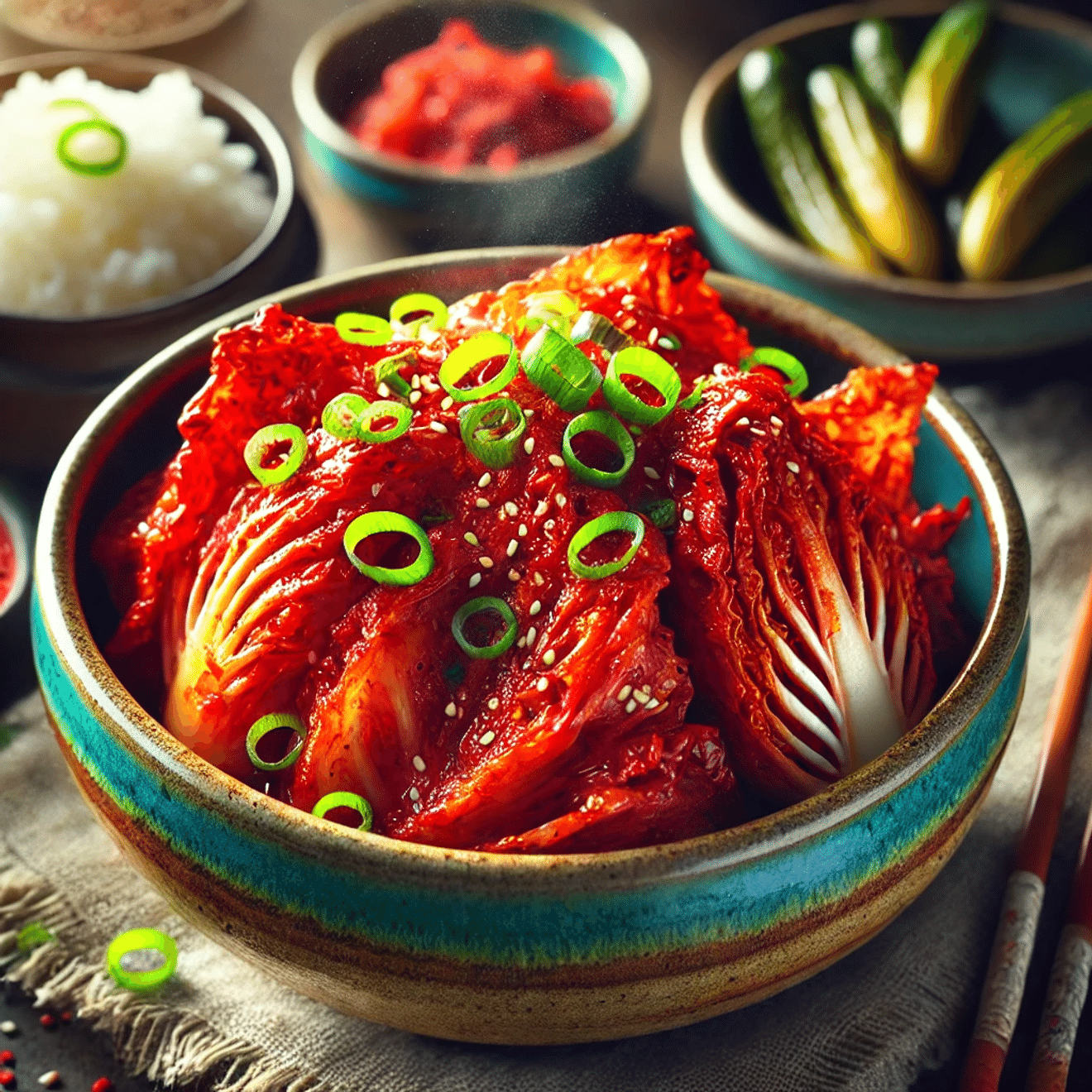
Kimchi
This is a helpful recipe from Baek Jong-won, covering the various types and preparation methods of kimchi, South Korea's representative food. This post is a summary based on a video.
Types of Kimchi
- Nappa Cabbage Kimchi: The most representative kimchi in Korea.
- Kkakdugi (Radish Kimchi): Kimchi made with diced radish.
- Chonggak Kimchi (Young Radish Kimchi): Kimchi using small, young radish.
- In addition, various types of kimchi are introduced, and the characteristics of each are explained.
Kimchi Making Process
1. Preparing the Napa Cabbage
- Selection and Preparation: Select fresh and firm napa cabbage, remove the outer leaves, and trim the bottom.
- Salting:
- Cut the cabbage in half and rub salt evenly.
- Alternatively, use a salt water solution.
- Salt until the cabbage softens and wilts.
2. Making the Kimchi Seasoning
- Main Ingredients:
- Gochugaru (Korean chili powder), Gochujang (Korean chili paste)
- Minced garlic, ginger
- Sugar, Saeujeot (salted shrimp), Aekjeot (fish sauce)
- Additional Ingredients:
- Seafood (oysters, shrimp)
- Vegetables (green onions, onions)
- Fruits (pears, etc.) can be added to enhance the flavor.
3. Combining Cabbage and Seasoning
- Applying the Seasoning:
- Evenly spread the seasoning between the leaves of the salted cabbage.
- Packing into a Container:
- When packing the kimchi into a container, remove as much air as possible and pack it tightly.
- This is important for maintaining flavor during fermentation.
Kimchi Fermentation and Storage
- Fermentation Conditions:
- Start fermentation at an appropriate temperature (about 15-20°C) and then refrigerate.
- The ripening period varies depending on the type of kimchi and personal preference.
- Storage Tips:
- Be careful not to overflow the kimchi juice during fermentation.
Tips and Techniques
- Adjust the amount of salt according to the size and condition of the cabbage.
2. Seasoning Adjustment: - Adjust the spiciness with the amount of gochugaru (Korean chili powder), and add sweetness and umami with the amount of sugar and saeujeot (salted shrimp).
3. Making Various Kimchi: - Instant kimchi, such as kkakdugi (radish kimchi), which can be eaten quickly, is also introduced.
The Charm of Kimchi
Baek Jong-won emphasizes that the process of making kimchi is not simply cooking, but a culture filled with dedication and creativity. By following this guide, even those who are trying to make kimchi for the first time can successfully try it.
Make delicious kimchi with Baek Jong-won’s recipe! 😋

Comments0